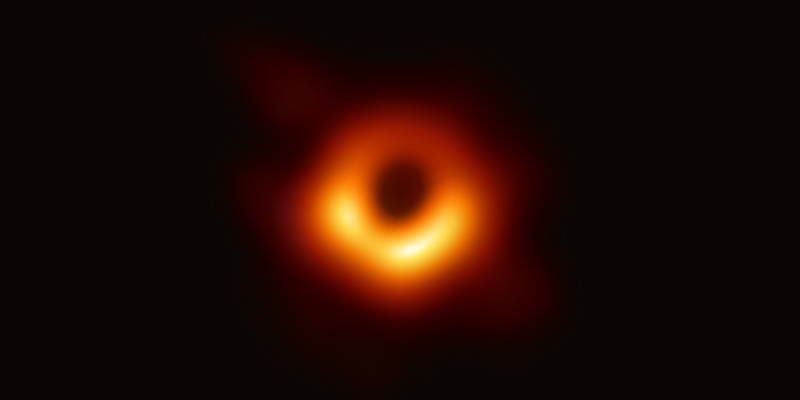- We just got the first-ever image of a black hole, the result of around 13 years work by scientists from 40 nations.
- However, some people saw the image as disappointing, and claimed that it looked like a smudge on a camera lens.
- The image is actually similar to what scientists predicted, as it captures something that is 54 million light-years away, and larger than our entire solar system.
- One scientist said at the press conference on Wednesday that we are “looking at a region that we’ve never looked at before – a region we cannot imagine being there.”
- Visit BusinessInsider.com for more stories.
Scientists just captured the first-ever photo of a black hole, capturing an object that is 54 million light-years away and is 3 million times the size of the earth.
Researchers from 40 nations spent around 13 years capturing the image of the black hole, which is 6.5 billion times larger than the Sun, with one astrophysicist saying during the briefing that “it feels like looking at the gates of Hell, at the end of space and time.”
Despite its huge scientific importance, some people were disappointed by the photo, which they say looks more like a smudge on a camera lens than an celestial object larger than our entire solar system.
https://twitter.com/WellsWoolcott/status/1116175832022753280?ref_src=twsrc%5Etfw
Is it just me, or is the newly announced image of a black hole somewhat disappointing? This is slightly more impressive than the hole in a donut. pic.twitter.com/Hd9m0xZIsL
— Bob Veres (@BobVeres) April 10, 2019
The M87 black hole is almost as disappointing as my son 😤 pic.twitter.com/KaaOJNXgQo
— Butter Helmet (@butterhelmet) April 10, 2019
https://twitter.com/gleads/status/1116228746497921024?ref_src=twsrc%5Etfwhttps://twitter.com/vbhatt08/status/1115973049344458754?ref_src=twsrc%5Etfw
The unprecedented image is actually in line with scientists expected.
Misty Bentz, an astrophysicist at Georgia State University, told Business Insider before the image was published that she expected it to show "more of a 'fuzzy blob'" than anything else.
While simulations showed a clear view of details like the the shadow caused by the black hole, the real image captured by a network of eight telescopes was always going to have less detail.
This difference was noticed by UK science charity The Royal Institution:
Instagram vs reality pic.twitter.com/DEeuQ2p5WC
— Royal Institution (@Ri_Science) April 10, 2019
But some people said that the photo ended up looking like a smudge on a camera lens.
I can't believe scientists worked for ten years to take this photo of a black hole and in that time no one thought the wipe the smudge from the lens. pic.twitter.com/mWT4ZxYjHD
— JAKE BUCKLEY 🇦🇺 (@TheMasterBucks) April 10, 2019
https://twitter.com/ChrisTarrant8/status/1116021615710674944?ref_src=twsrc%5Etfwhttps://twitter.com/sonofdavid777/status/1116134654245867520?ref_src=twsrc%5Etfw
The black hole itself is devoid of light, and can't be seen in the photo, as Heino Falcke, an astrophysicist at Radboud University Nijmegen and an Event Horizon Telescope collaborator, noted during a live press briefing on Wednesday.
"You cannot see a black hole, but you can actually see its shadow. That's when the light disappears behind the event horizon, creating that region, that dark shadow we see there."
"We're looking at a region that we've never looked at before - a region we cannot imagine being there," he said.
"It feels like looking at the gates of Hell, at the end of space and time: the event horizon, the point of no return. That is awe-inspiring to me, at least, but it's also important to physics."
And the final image looked similar to simulated images created by astrophysicists and computer scientists before the image went public.
https://twitter.com/kyrah/status/1115969554361061376?ref_src=twsrc%5Etfw
And many Twitter users defended the image against claims that it was disappointing, highlighting the scientific breakthrough it represents.
https://twitter.com/tylrfishr/status/1116000180053139457?ref_src=twsrc%5Etfw

